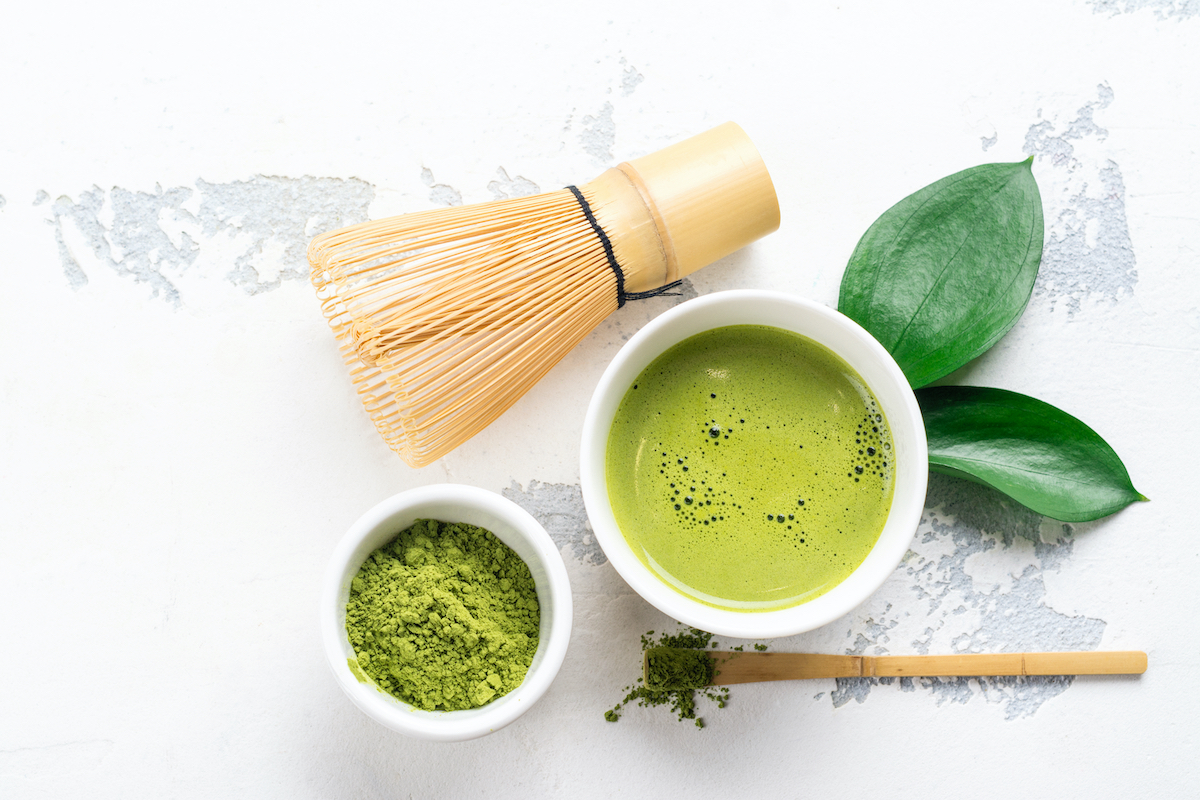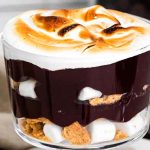
Photo Credit: Shutterstock
Have you seen matcha on the Starbucks menu and wondered what the hype is about? What is matcha? Does it taste good? How do you prepare it?
In this article, I explain everything you need to know about this green tea powder, including how to prepare it and some delicious ways to use it in some of your favorite recipes!
What Is Matcha?
Matcha is a type of green tea that is ground into a fine powder. Instead of being steeped, it is whisked directly into hot water and creates a frothy and rich warm drink.
It has become more universally popular in recent years due to its potential health benefits, but it is part of the ancient Japanese tea ceremony tradition.
It is made from specially grown tea leaves that are shaded from the sun for several weeks prior to harvesting and then stone-ground into a fine powder. Now it is used in various drinks, such as green tea lattes, and boba tea, and even desserts like cookies and ice cream.
Matcha contains high levels of antioxidants, vitamins, and minerals, making it a beneficial addition to any health-conscious diet. It is also said to boost energy levels and increase focus and concentration when consumed in moderation.
However, matcha is not for everyone – people who are sensitive to caffeine or other stimulants should moderate their consumption of this powerful powder.
Overall, matcha is a delicious and nutritious tea product that can offer many health benefits for those willing to try it.
Where Does Matcha Originate From?
In ancient China, before there were methods for steeping tea, tea leaves were instead ground into a fine powder and whisked into hot water. Once teapots became more widely used, China abandoned this previous method in favor of steeping their tea instead.
However, Japan continued to use the method of ground green tea, and through the ages, it became a well-practiced meditative ceremony known as “chadō” (or “The Way of Tea“). This aesthetic, spiritual practice focuses on preparing the tea and presenting around the principles of harmony, respect, purity, and tranquility. This tea ceremony tradition continues today.
How Is Matcha Different From Green Tea?
Green tea and matcha are not the same. There are many differences, including the flavor, how they are prepared, and how they are processed.
Matcha differs from green tea because it is made from powdered leaves instead of steeped leaves. This makes matcha more concentrated than regular green tea and gives it a distinct flavor and texture. It is also much more potent – one cup of matcha has the equivalent amount of caffeine as two to three cups of regular green tea.
Green tea has a lighter flavor, while matcha is bolder. Matcha is often served with milk and sugar, while green tea is steeped in hot water and not served with any additions.
Green tea and matcha come from the same plant but are processed differently. Green tea is made using the entire leaf of the plant, while matcha removes the stems and the veins of the leaves. Matcha is ground into a powder.
Green tea is dull green in color, while matcha has a bright green color.
Additionally, matcha is said to provide greater health benefits due to its higher concentration of antioxidants. Matcha is also more versatile – you can use it in various ways, such as drinking it as tea, adding it to smoothies or baking recipes, and even using it topically on the skin. Ultimately, what makes matcha unique compared to green tea is its potency and versatility.
Types of Matcha
Matcha comes in three grades: ceremonial, premium, and culinary.
Ceremonial grade matcha is the highest quality of matcha available. It is meant for preparing tea drinks and is typically used in Japanese tea ceremonies. It has a bright green color, a sweeter taste, and is more finely ground than other grades of matcha.
Premium grade matcha is slightly lower quality than ceremonial but still contains many beneficial properties and can be used for drinking or baking.
Culinary-grade matcha is the lowest quality of matcha available, making it more suitable for baking recipes where the flavor isn’t as important. Ceremonial-grade tea is much more expensive than culinary-grade. However, do not opt for this type if you use your matcha to make drinks. If you plan to use your matcha to make matcha cookies or cake, then opt for the culinary grade.
Does Matcha Have Caffeine?
Yes, matcha is caffeinated. It has more caffeine than green tea, less caffeine than coffee, and about the same caffeine as black tea. Typically, matcha contains between 25-70mg of caffeine.
Additionally, matcha also contains theanine – an amino acid that can help reduce anxiety and stress while still providing energy boost without the jitters or crashes associated with coffee. When consumed in moderation, matcha can give you a long-lasting energy boost without any adverse effects.
How To Make a Cup of Matcha
Step 1: Bring about ⅓ of a cup of water to a boil. Remove it from the heat and allow it to cool for a few minutes.
Step 2: Add ½ teaspoon of matcha powder to a small bowl with a teaspoon or more hot water. Using a bamboo whisk, whisk it together until a paste forms.
Step 3: Add the remaining hot water to the small bowl, and whisk vigorously until all of the paste is incorporated into the hot water and a frothy foam forms.
Tips for Preparing Matcha Tea
- Use a bamboo whisk (if available). Many high-quality brands sell a whisk with matcha as part of a beginner’s package. Using the bamboo whisk is what gives the frothy, foamy texture. Unfortunately, this can’t be achieved if using a wire whisk.
- Make sure you allow the boiling water to cool for a few minutes before pouring it over the matcha paste. The delicate matcha will burn if you pour boiling hot water over the matcha paste.
- The amount of water you add to your paste depends on how strong and thick you prefer your matcha. For a thick and strong serving, use ¼ cup of warm water. For a thinner, less bold flavor, use ½ a cup of warm water.
- If you’d like iced matcha, pour the warm water over the ice.
Best Matcha Recipes
- CopyCat Starbucks Matcha Latte: A cool, creamy, and refreshing drink with all the flavor of your favorite Starbucks version but without all the sugar and calories.
- Matcha Muffins: These light and fluffy muffins are subtly sweet with a hint of green tea freshness. They’re made in one bowl and are the perfect snack or treat!
- Matcha Ice Cream: This delicate and beautiful ice cream is smooth and creamy with only five simple ingredients.
- Matcha Cookies: These soft and chewy cookies are rolled in sugar. They’re perfectly balanced with the earthy flavor of matcha.
- Matcha Pound Cake: This cake is rich and ultra moist with all the elements you love of a traditional pound cake, but with the refreshing flavor of matcha!
Overall, matcha may be what you’re looking for if you are looking for an energizing drink with potential health benefits.
Not only does it have a unique flavor and texture that sets it apart from regular green tea, but its concentrated form also boasts a range of powerful vitamins and minerals that can help enhance your overall well-being.
Whether you’re looking to increase your focus and concentration or want something delicious for your morning beverage routine, matcha may be worth trying.
This article was produced by Wealth of Geeks.








Leave a Reply